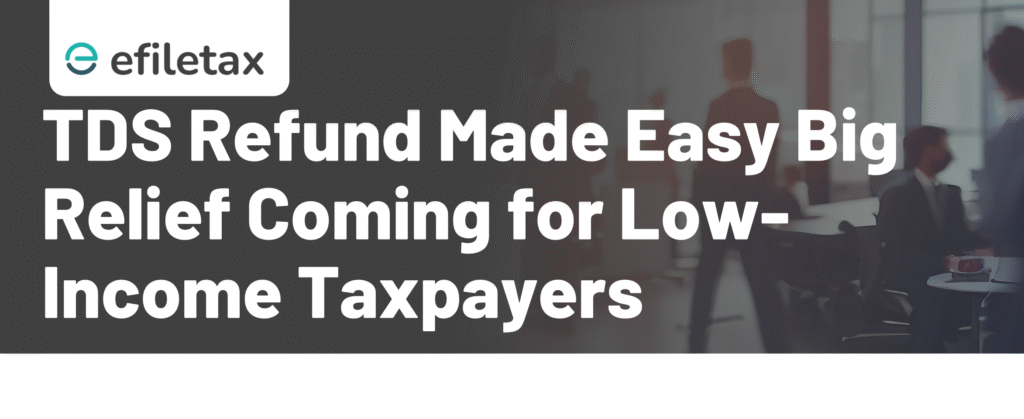
TDS Refund Process May Soon Get Simpler for Low-Income Taxpayers
If your income is below the tax limit but TDS still gets deducted—relief is on the way. The Central Board of Direct Taxes (CBDT) is working on a streamlined refund system aimed at reducing delays for those not liable to pay tax but facing deductions.
Why This Change Matters
As per income tax rules, individuals earning below ₹2.5 lakh (or ₹3 lakh/₹5 lakh, based on age) aren’t required to pay tax. But banks, employers, or other entities still deduct TDS from salary, interest, or commission—even if no tax is finally payable.
Currently, such taxpayers must:
- File an ITR to claim refund
- Wait for processing and refund from CPC
- Deal with potential delays and mismatches
CBDT now wants to change that.
CBDT’s Proposed Simplified TDS Refund System
As per internal sources (Economic Times report dated July 2025), the CBDT is exploring:
- Automatic refund of TDS for individuals below the exemption limit
- PAN-linked verification of income from AIS/TIS to confirm refund eligibility
- Minimal or no need to file ITR for such low-income cases
- System-generated refund credit to the bank account after validation
Who May Benefit?
The simplified TDS refund system may cover:
| Category | Likely to Benefit |
|---|---|
| citizens (above 60/75) | Yes |
| Housewives with FD interest | Yes |
| Students with part-time work | Yes |
| Small commission earners | Yes |
| Salaried under rebate limit | Yes |
Expert View: “The current mismatch between tax liability and TDS collection is a drain on liquidity for small taxpayers. If implemented, this move could free up working capital faster and reduce unnecessary filings.” – CA Karthik Iyer, Efiletax Contributor
Legal Angle: Current Provisions Causing Refund Delays
- Section 197 allows application for lower/no TDS, but the process is manual and time-bound
- Form 15G/15H helps avoid TDS, but many taxpayers miss filing it
- Section 237 to 241 covers refund eligibility, but only post-ITR filing
Thus, even with nil tax liability, many individuals face delays of 3–6 months in getting their money back.
How Will It Work?
Here’s a possible step-by-step refund route CBDT may introduce:
- TDS deducted by bank/employer as usual
- Income verified from AIS/TIS or bank reporting
- System checks eligibility under tax-free income slab
- Refund auto-processed without ITR filing
- Credit to bank account linked to PAN
Note: This is under development; final structure may evolve after pilot testing.
Tips to Avoid TDS for FY 2025–26
Until the simplified system rolls out, here’s what low-income taxpayers can do:
- Submit Form 15G/15H to banks before April
- Monitor AIS/TIS reports for TDS entries
- File ITR even if not required—to claim refund
- Ensure correct bank account and PAN is linked
Summary
CBDT may soon simplify the TDS refund process for taxpayers with income below the tax limit. The plan involves automatic refunds based on AIS/TIS data, avoiding the need for ITR filing in many cases.
FAQ on Simpler TDS Refund
Q1. Will I still need to file ITR for TDS refund if I earn below ₹2.5 lakh?
If the new system is approved, you may not need to file ITR—refunds could be auto-processed based on PAN and AIS.
Q2. Is this change applicable for FY 2024–25?
No. It is currently in proposal stage and may apply to future financial years once officially notified.
Q3. What if I already filed Form 15G/H?
If filed correctly, no TDS should be deducted. But if missed, you’ll need to claim refund as per current rules.
Q4. Will interest be paid on delayed refund?
Yes. Under Section 244A, interest is paid if the refund is delayed beyond due period.
Final Thoughts
A simplified TDS refund for those below tax limit could improve taxpayer experience, reduce ITR burden, and fast-track liquidity for small savers. Until then, stay compliant and use Form 15G/15H or file ITR to claim your refund.